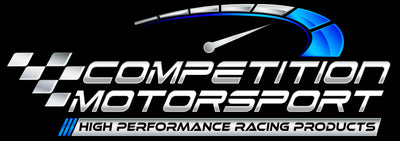
Performance Friction Corporation
Performance Friction PFC Brake Pads 0635.XX.13.44 (Front)
from $198.34
PFC 0635.XX.13.44 Front Brake Pads
Fits Mazda Miata (1994 - 2005), Front
PFC 08 Compound:
One of PFC's most popular compounds which came to fame in Endurance Sportscar and GT racing due to its performance in applications where smooth initial bite is a must. PFC08 has a slight friction rise with temperature, excellent release and modulation characteristics. Despite its considerable performance, 08 has the lowest wear rate of all PFC compounds and can easily match the wear characteristics of the other competitors' materials but with much higher bite and consistent performance across a broad temperature range.
PFC 11 Compound:
Based on the out-going 01-compound, Performance Friction's 11-compound takes the same great high-bite and torque but with even better rotor and pad wear characteristics and improved bite, modulation, and release. Exhibiting a very high initial bite and torque, very little temperature induced torque rise follows. Less torque scatter exists for improved modulation with excellent release, helping to eliminate wheel lock at the end of a stop.
PFC 97 Compound:
A favorite since its debut, Performance Friction's 97 compound continue to impress, winning numerous races in CART, ALMS, Grand Am, ASA, and Club Races everywhere. PFC 97 has less initial bite and torque than PFC 11 while offering great modulation, a very flat torque curve, and excellent release characteristics. A naturally low-wearing pad, PFC 97 compound is popular in the endurance circuits and amongst Club Racers and Track-Day enthusiasts.

Pagid
Pagid Racing Brake Pads No. 8127 USA (Front)
from $190.36
Pagid Racing Brake Pad Shape No. 8127USA
Fits the Following Vehicle:
Make
Model
Build (Year)
Front
Rear
Mazda
Miata 1.8 NB (spec Miata)
1994 - 2000
X
Pagid Racing Brake Pads are engineered for high-performance driving, delivering exceptional stopping power, durability, and control under the most demanding conditions. Trusted by professional racers and performance enthusiasts worldwide, these pads are crafted using advanced friction materials and cutting-edge technology to ensure consistent performance, low fade, and excellent modulation. Whether you're on the track or tackling aggressive street driving, Pagid Racing Brake Pads provide the reliability and confidence you need to push your vehicle to its limits.
Pagid Racing Brake compounds are for steel (cast iron) rotors only unless otherwise noted.
RSL 29 Compound:
The Pagid RSL 29 (Yellow) is the world-leading endurance brake pad used by most of the winning teams in motorsport. Although designed primarily for endurance racing, many competitors use this material successfully for sprint and short distance races also. RS29 has also found favor in the growing track day market due to the level of control, good cold performance, long life and low disc wear.
Pagid RST 3 Compound:
RST 3 is a medium-high friction metal-ceramic compound containing steel fibers and is therefore the perfect complement of the RST product family. It captivates by its low heat conductivity. Rally tarmac and gravel, GT cars, touring cars and prototype circuit racing, formula cars and club racing. Wide range of applications due to it‘s combination of bite, friction and controllability.

Performance Friction Corporation
Performance Friction PFC Brake Pads 0636.XX.13.44 (Rear)
from $186.67
PFC 0636.XX.13.44 Rear Brake Pads
Fits Mazda Miata (1994 - 2005), Front
PFC 97 Compound:
A favorite since its debut, Performance Friction 97 Compound Racing Braking Pads continue to impress, winning numerous races in CART, ALMS, Grand Am, ASA, and Club Races everywhere. The 97-Compound has less initial bite and torque then the 01, while offering great modulation, a very flat torque curve, and excellent release characteristics. A naturally low-wearing pad, the 97 compound is popular in the endurance circuits and amongst Club Racers and Track-Day enthusiasts.
PFC 11 Compound:
Based on the outgoing 01-compound, Performance Friction's 11-compound takes the same great high-bite and torque but with even better rotor and pad wear characteristics and improved bite, modulation, and release. Exhibiting a very high initial bite and torque, very little temperature induced torque rise follows. Less torque scatter exists for improved modulation with excellent release, helping to eliminate wheel lock at the end of a stop.

Pagid
Pagid Racing Brake Pads No. 8129 USA (Rear)
from $164.40
Pagid Racing Brake Pad Shape No. 8129USA
Fits the Following Vehicle:
Make
Model
Build (Year)
Front
Rear
Mazda
Miata 1.8 NB (Spec Miata)
1994 - 2000
X
Pagid Racing Brake Pads are engineered for high-performance driving, delivering exceptional stopping power, durability, and control under the most demanding conditions. Trusted by professional racers and performance enthusiasts worldwide, these pads are crafted using advanced friction materials and cutting-edge technology to ensure consistent performance, low fade, and excellent modulation. Whether you're on the track or tackling aggressive street driving, Pagid Racing Brake Pads provide the reliability and confidence you need to push your vehicle to its limits.
Pagid Racing Brake compounds are for steel (cast iron) rotors only unless otherwise noted.
RSL 29 Compound:
The Pagid RSL 29 (Yellow) is the world-leading endurance brake pad used by most of the winning teams in motorsport. Although designed primarily for endurance racing, many competitors use this material successfully for sprint and short distance races also. RS29 has also found favor in the growing track day market due to the level of control, good cold performance, long life and low disc wear.
Pagid RST 4 Compound:
RST 4 is a semi-metallic resin bonded material containing steel fibers. This material has a medium friction level and high temperature resistance. Typically use is in formula cars and open wheel racing. It is also very popular as a rear-axle material for rally racing (tarmac and gravel) and for front engine cars. Also used in NASCAR on long ovals.



